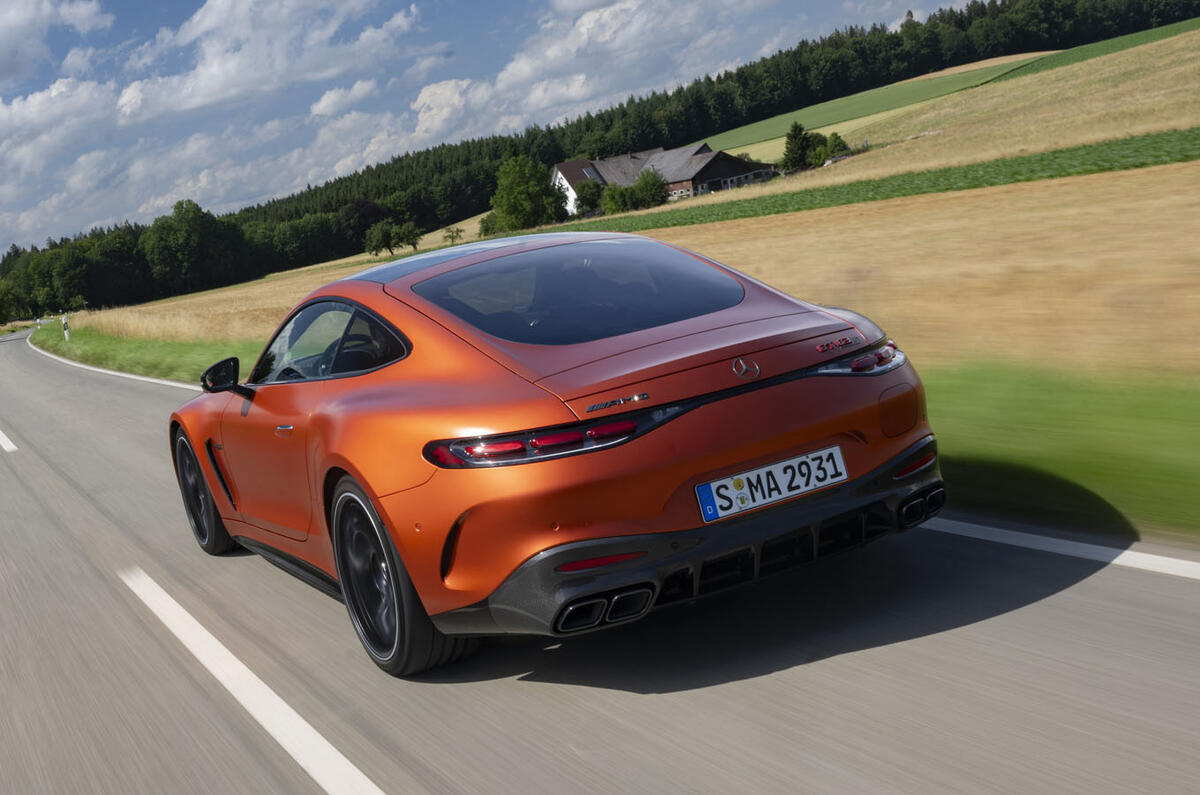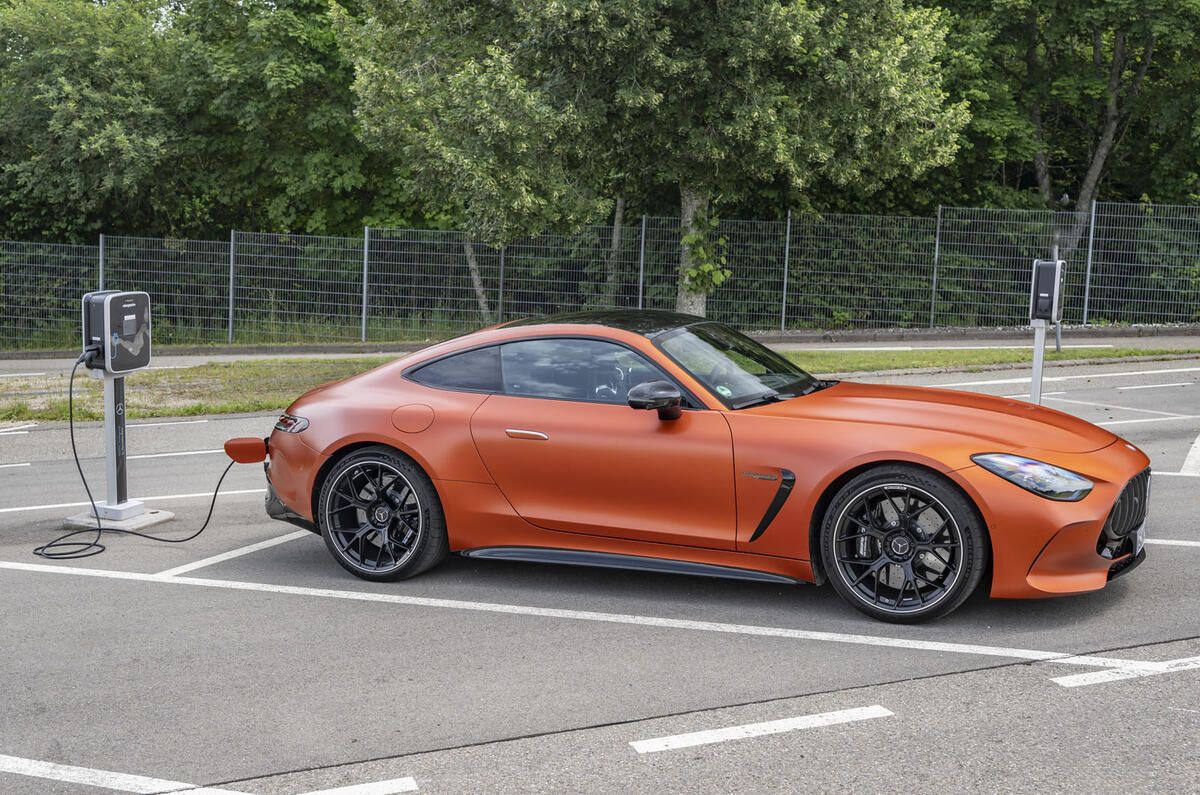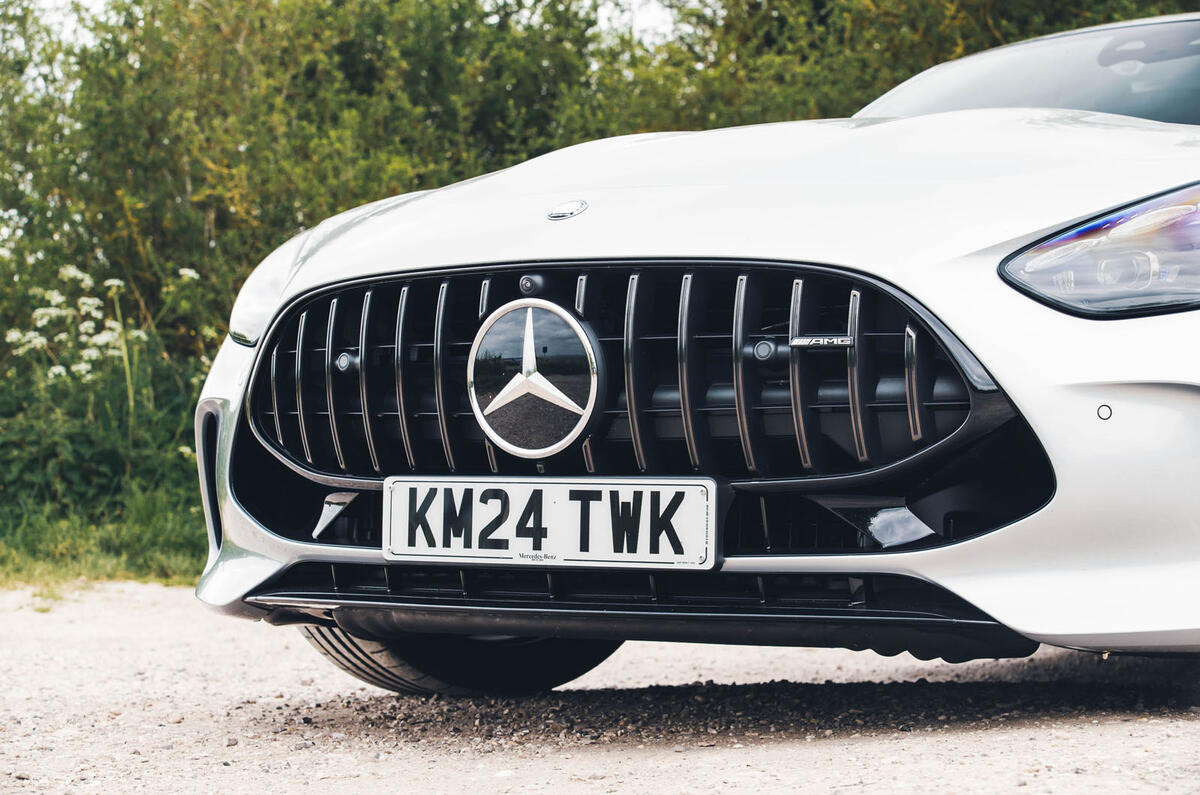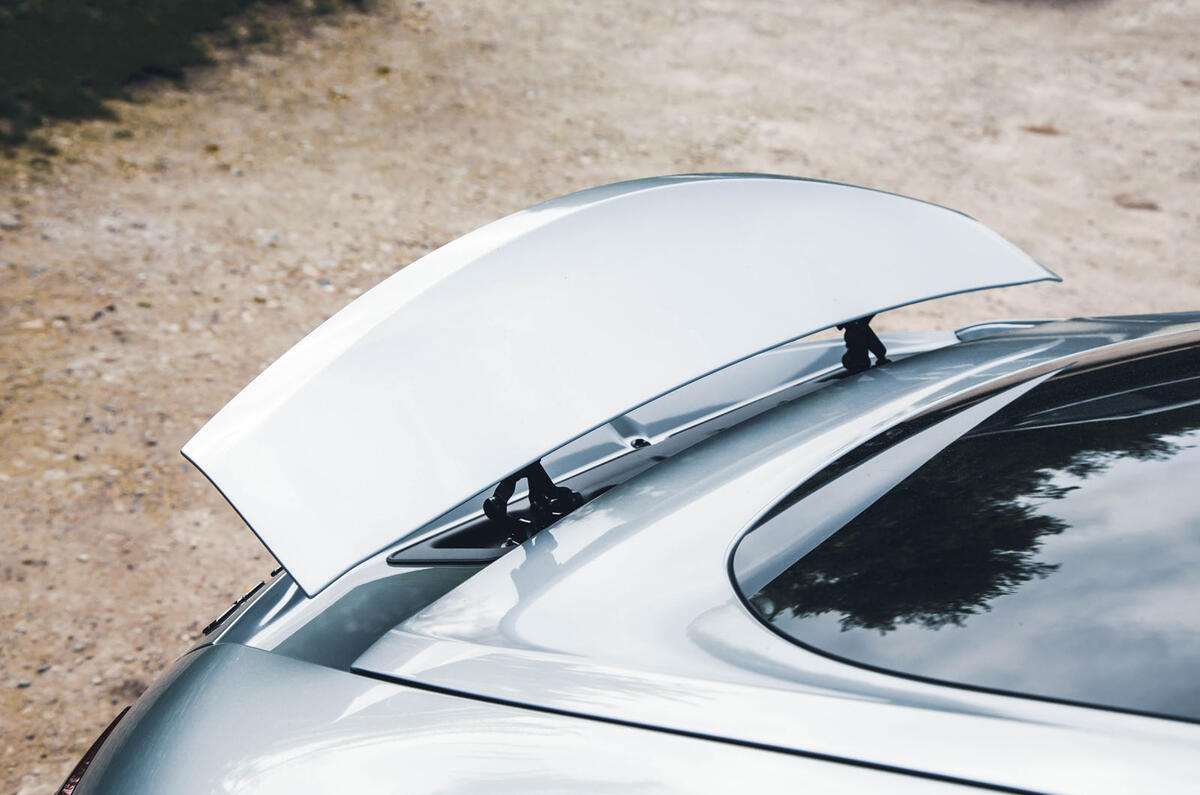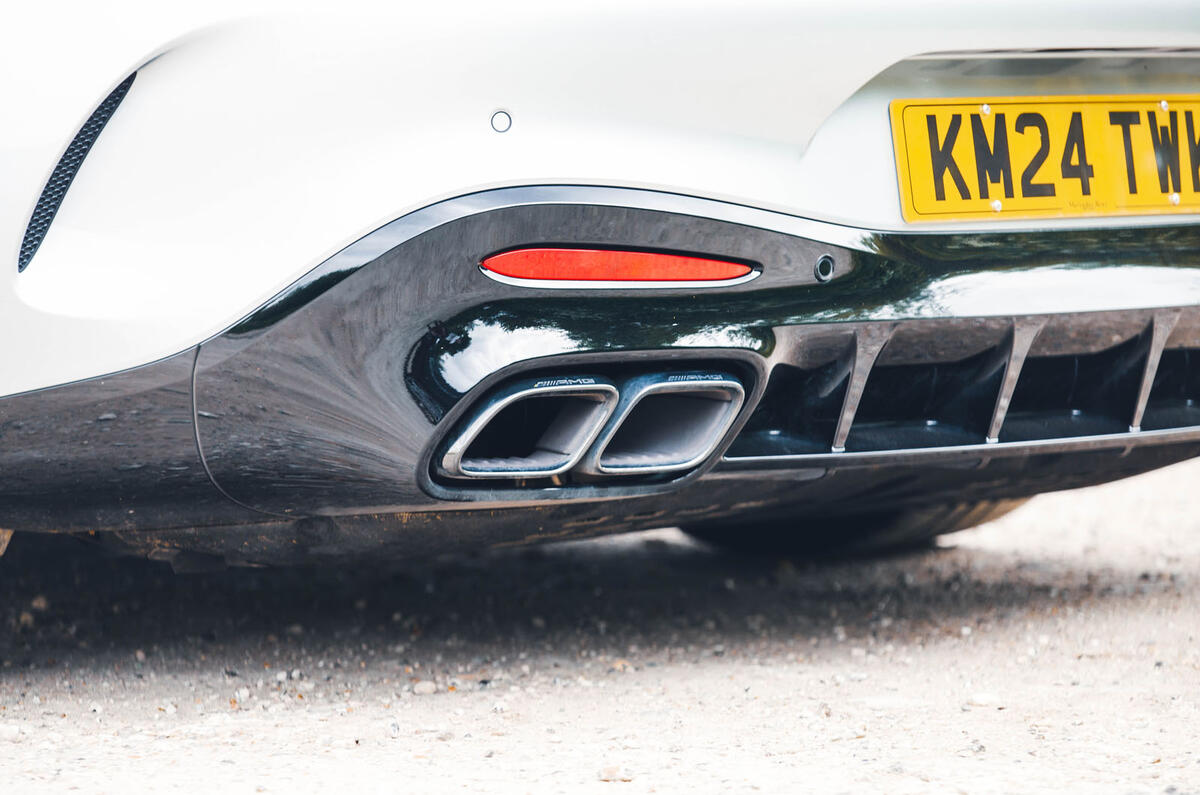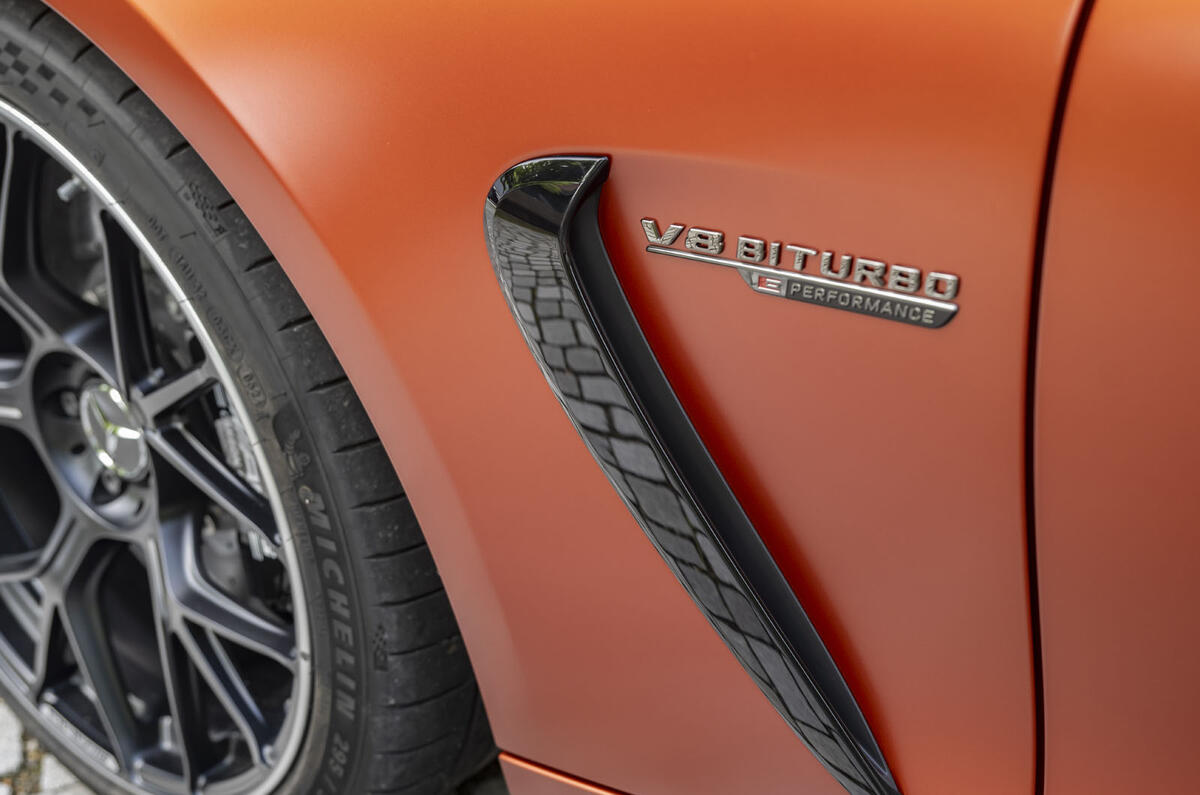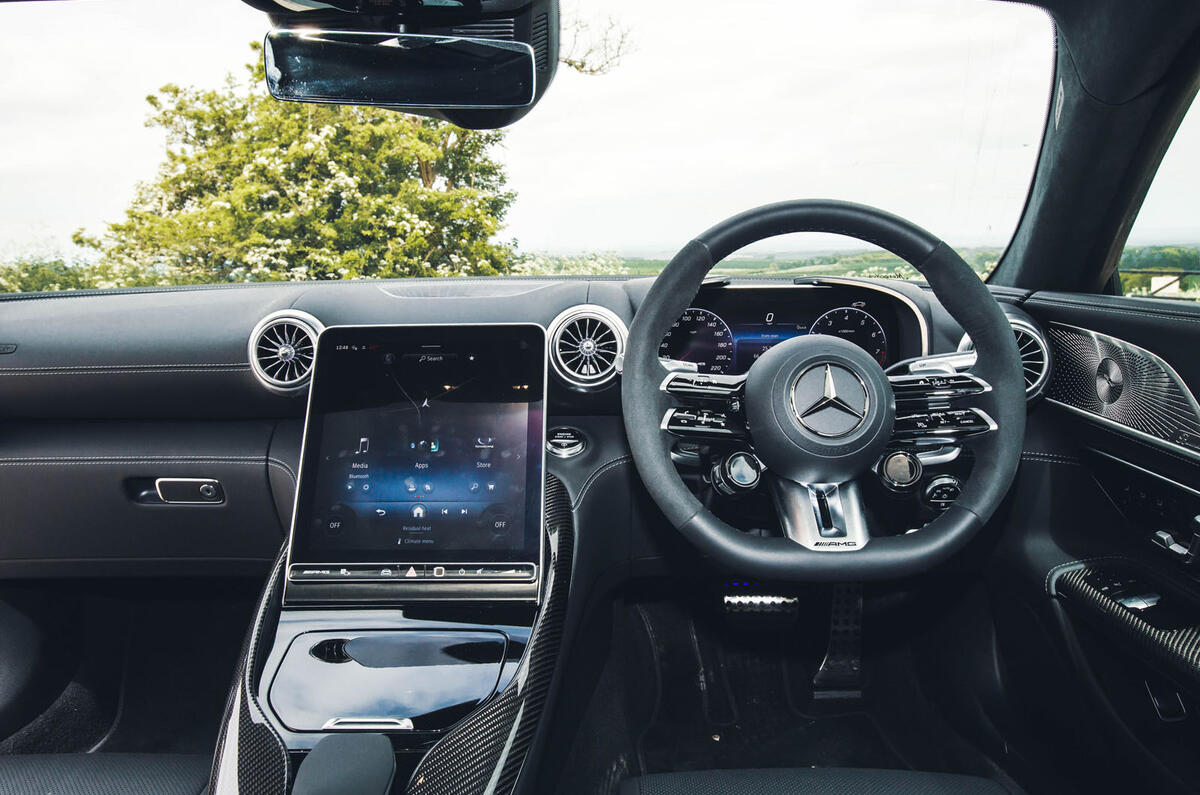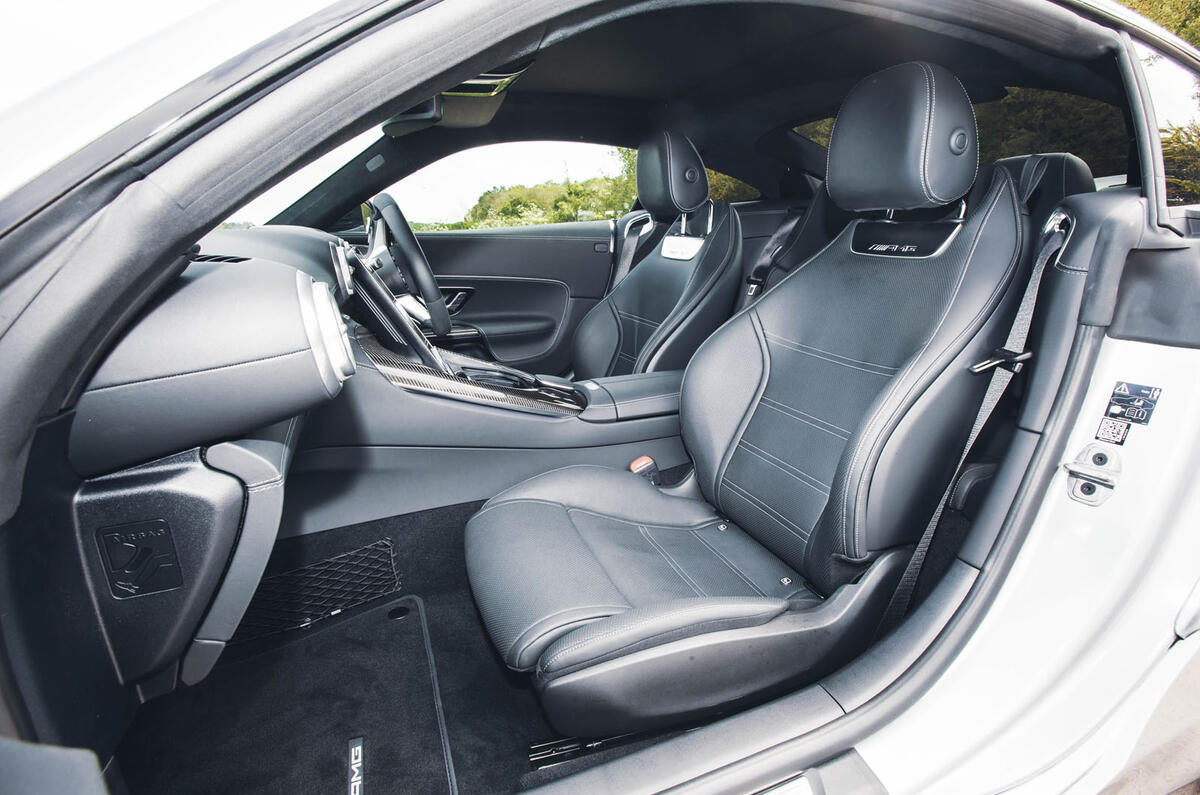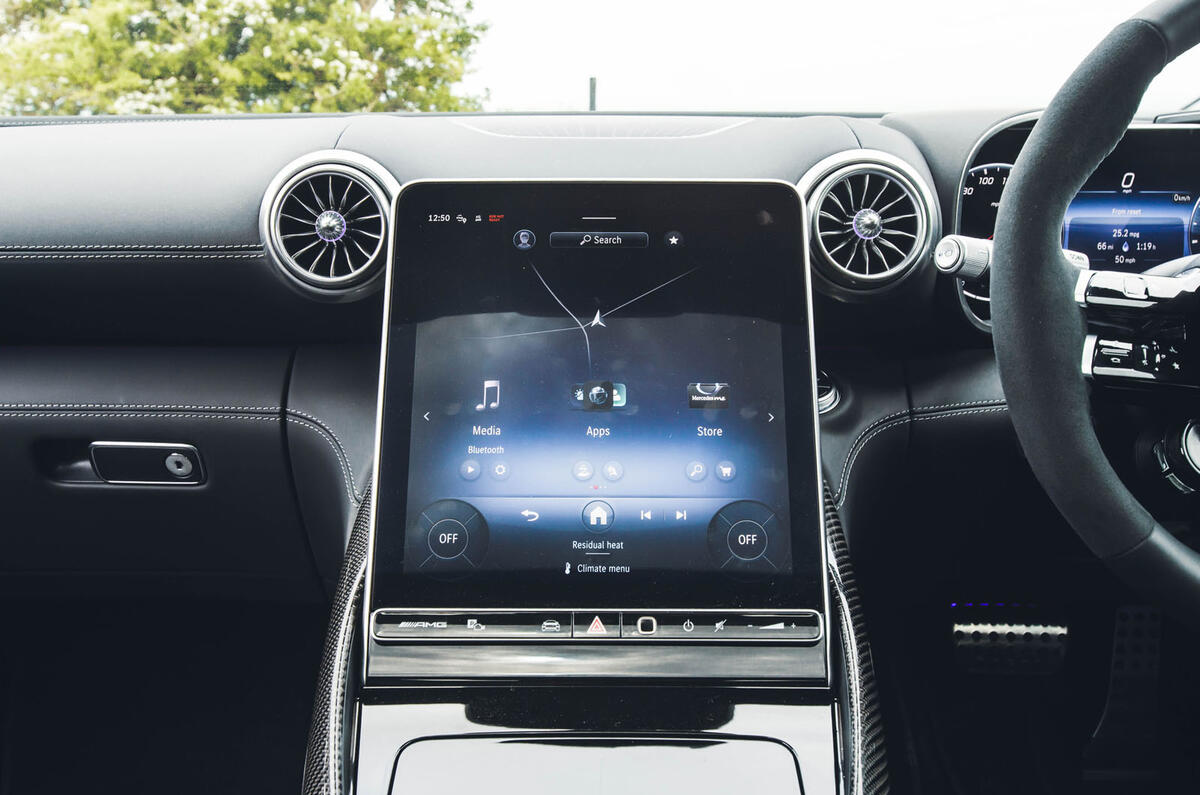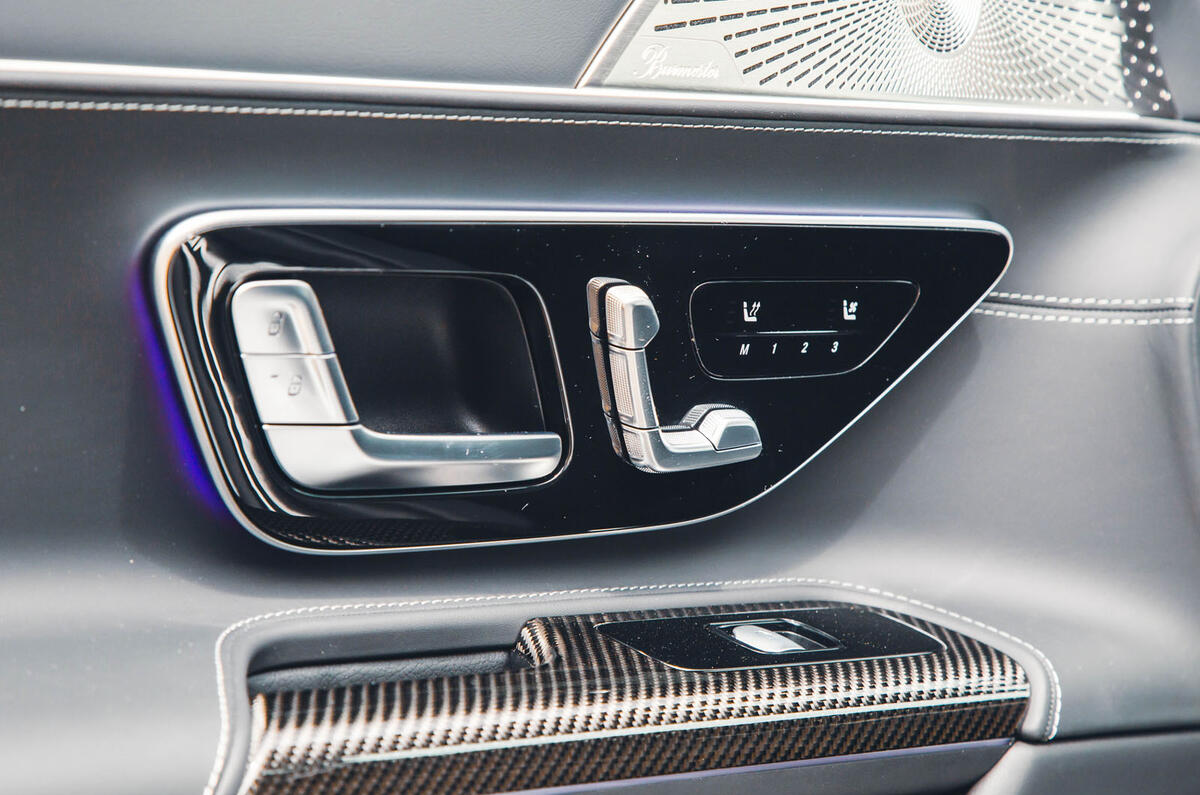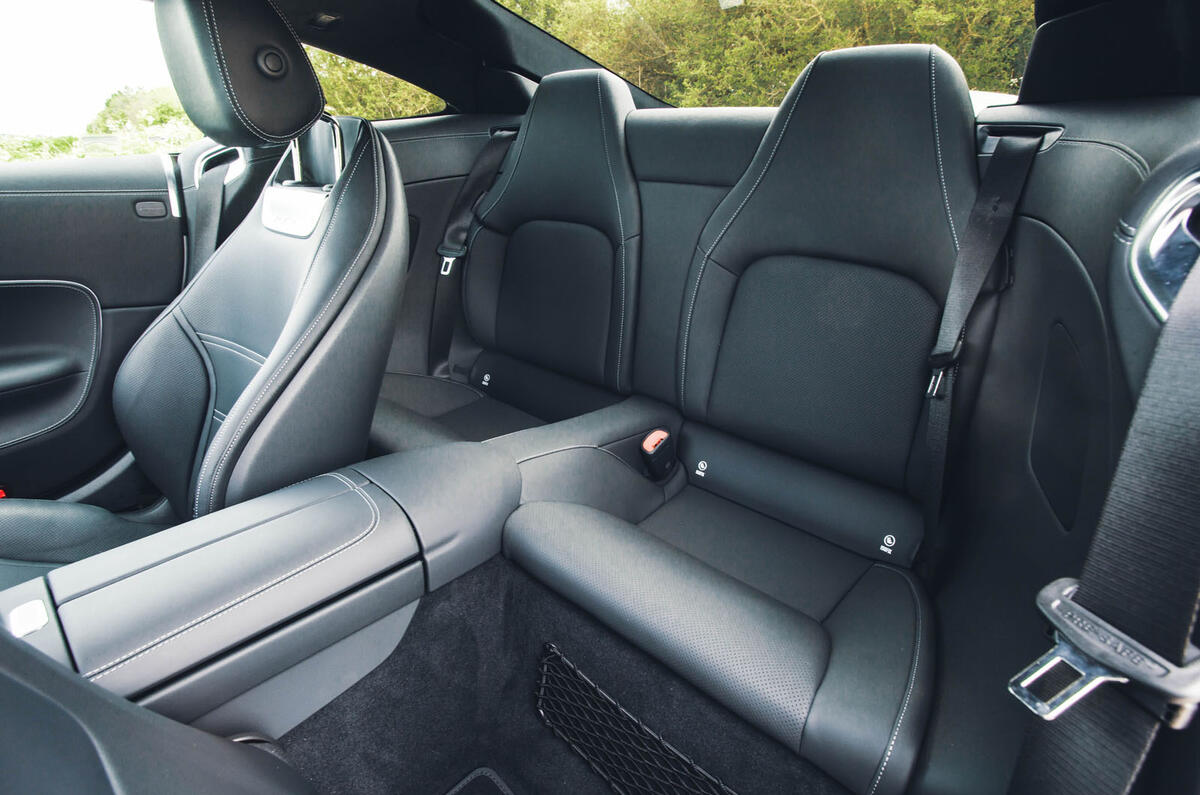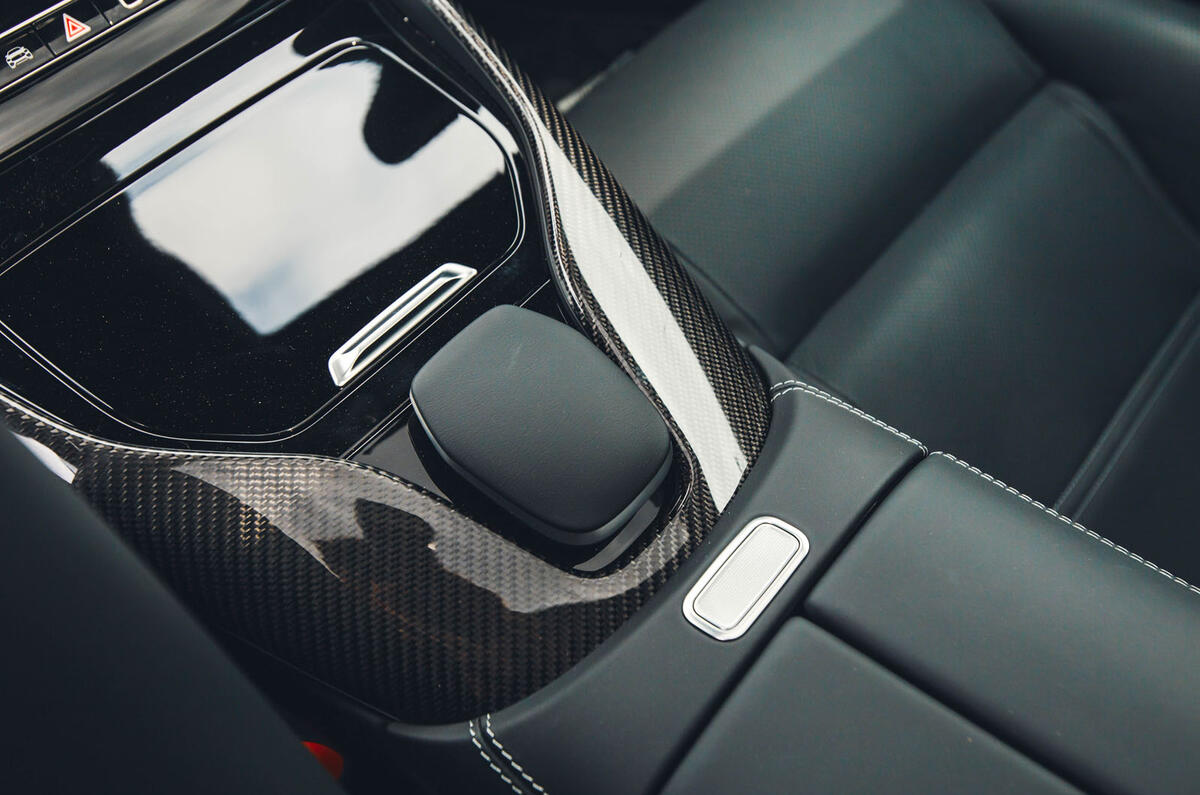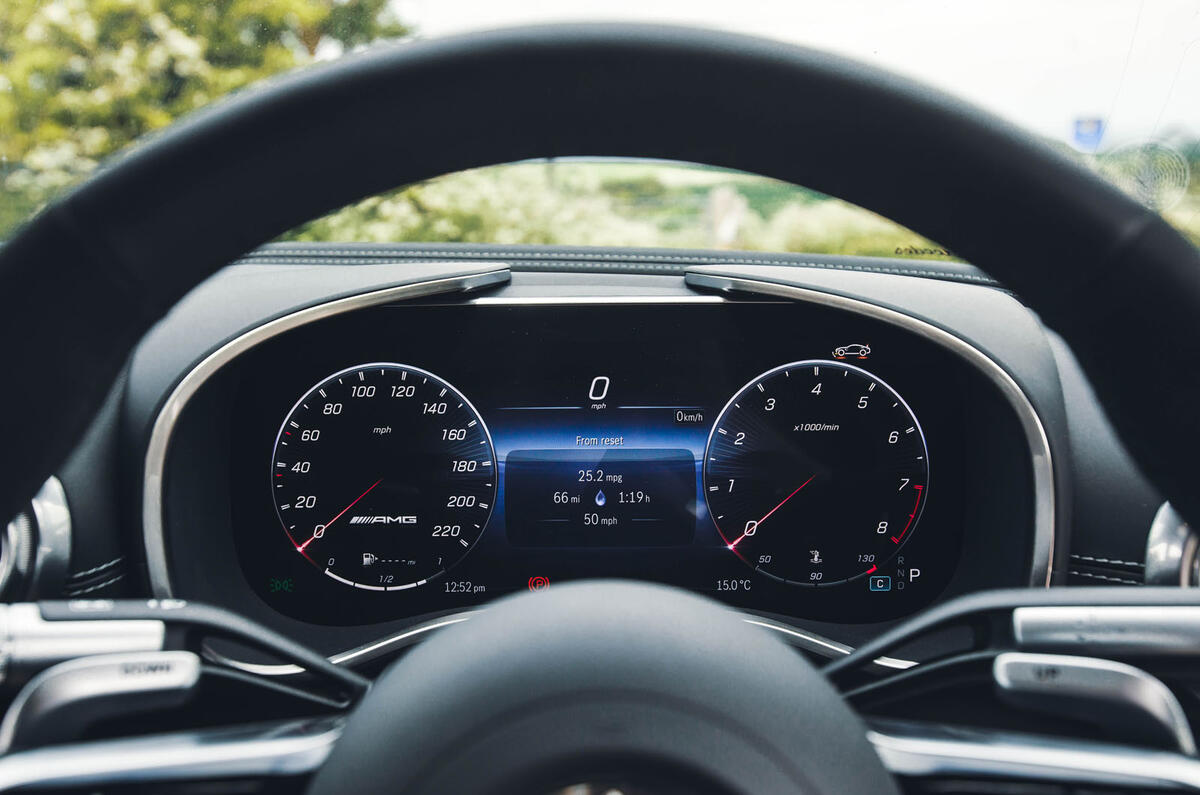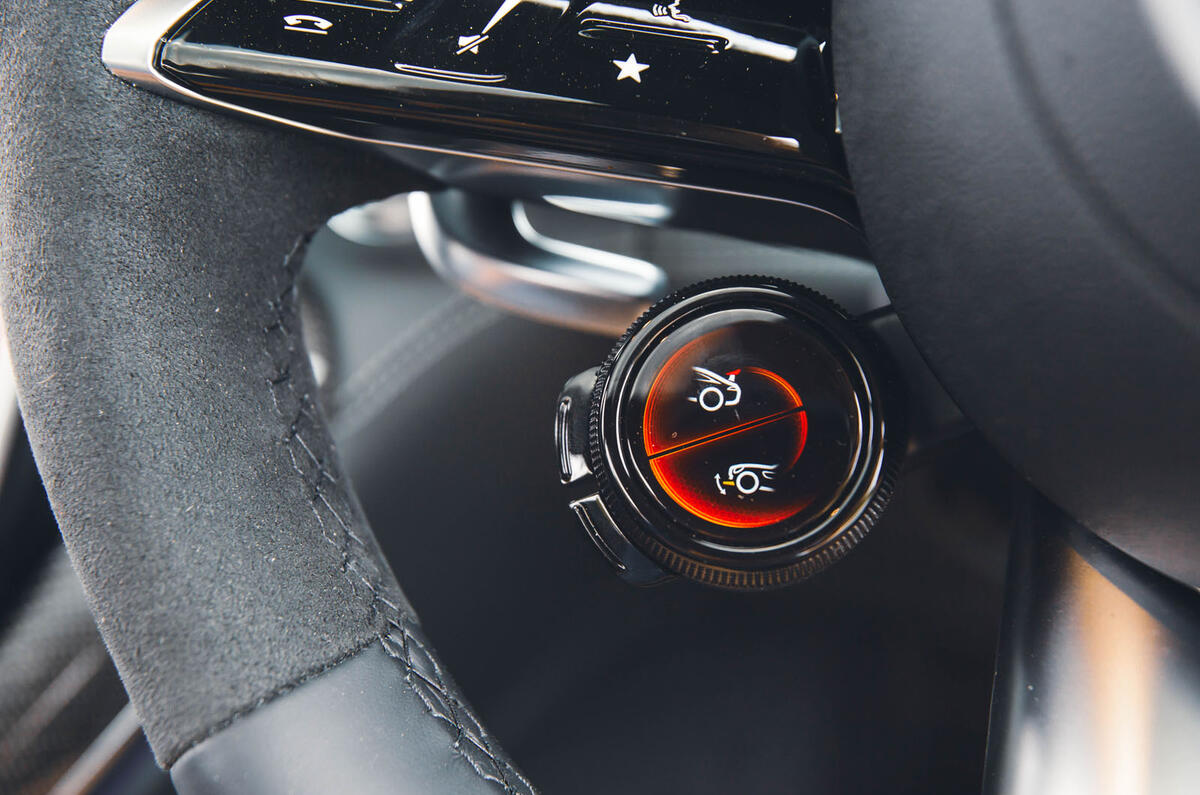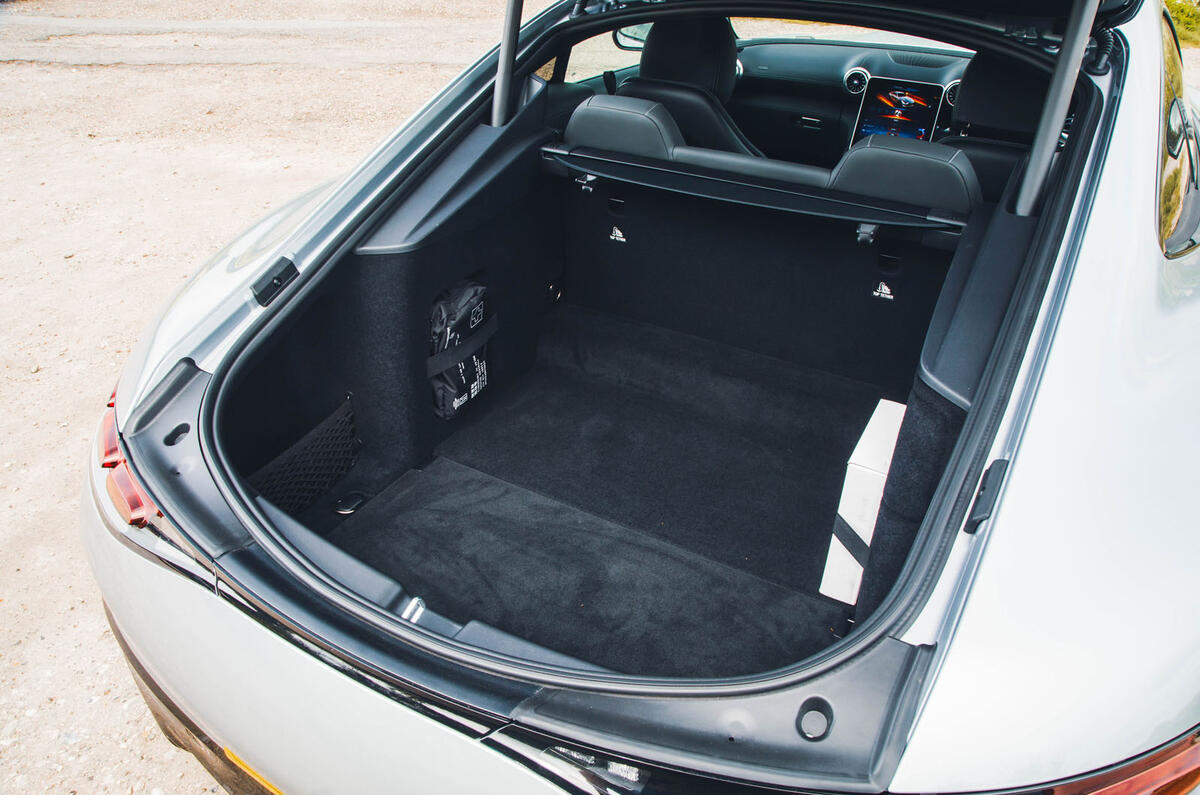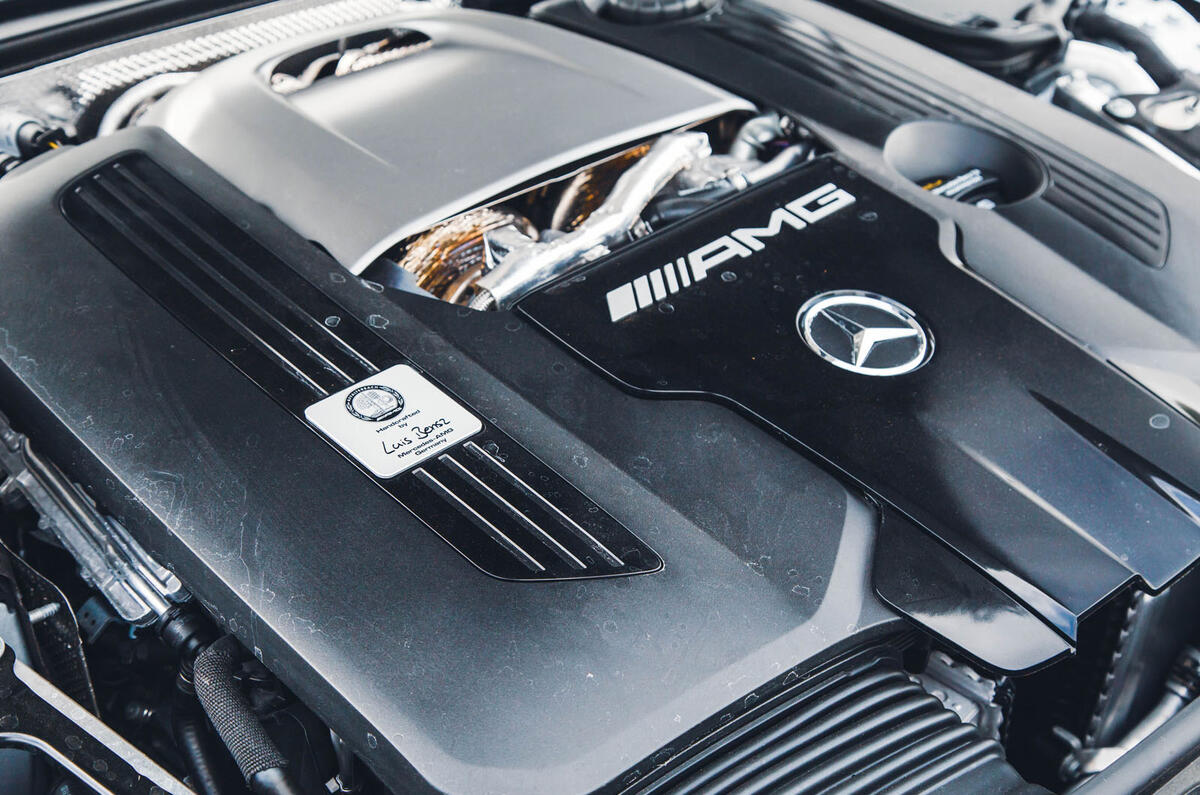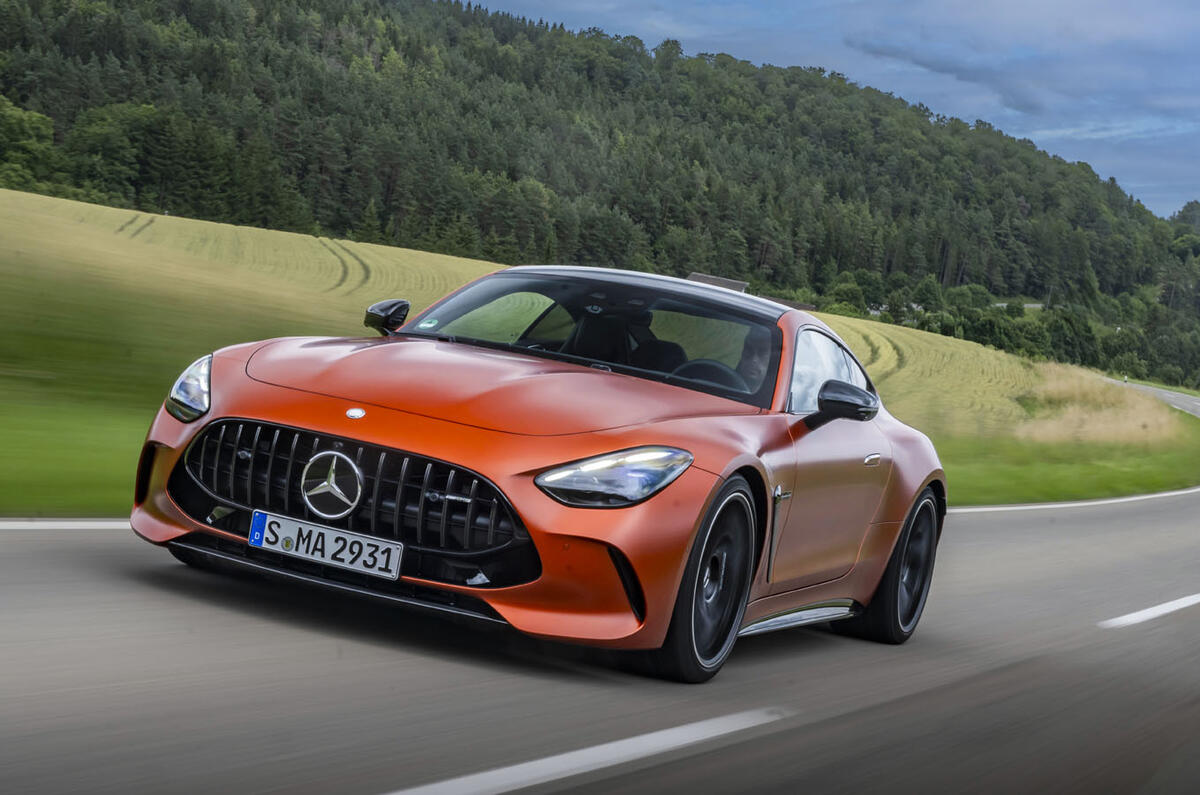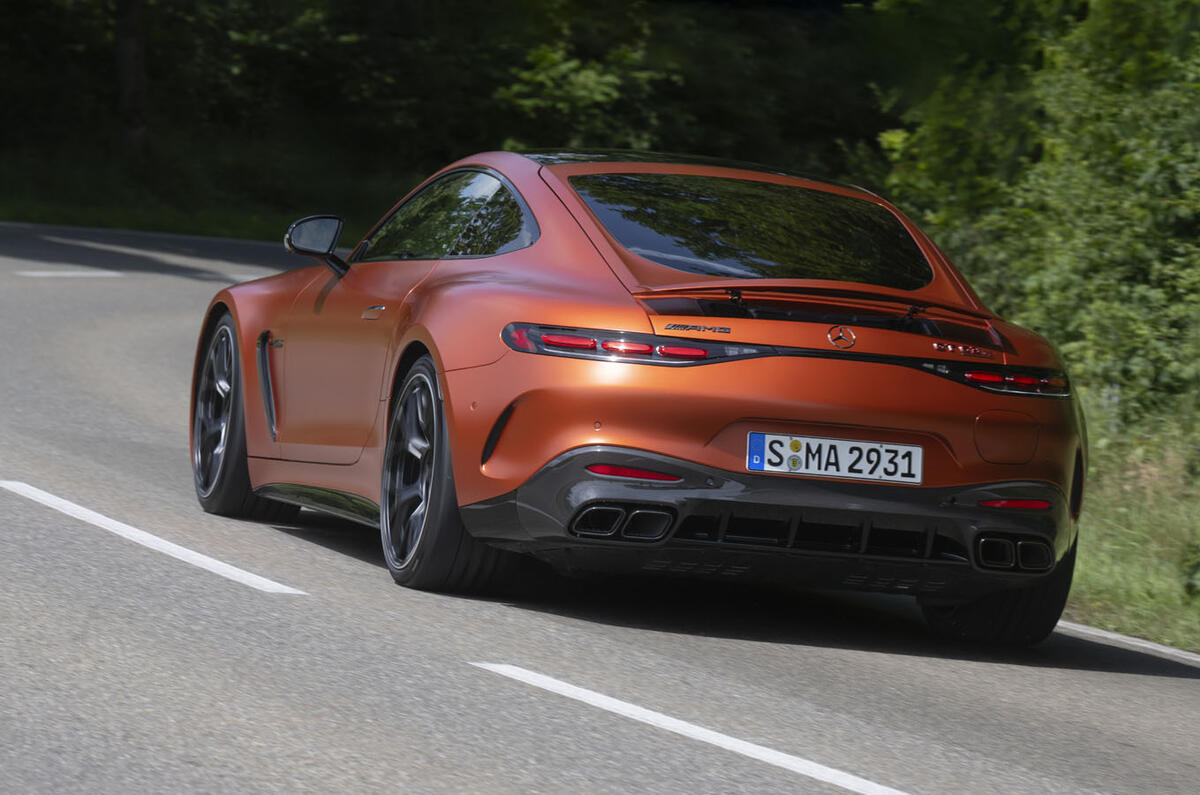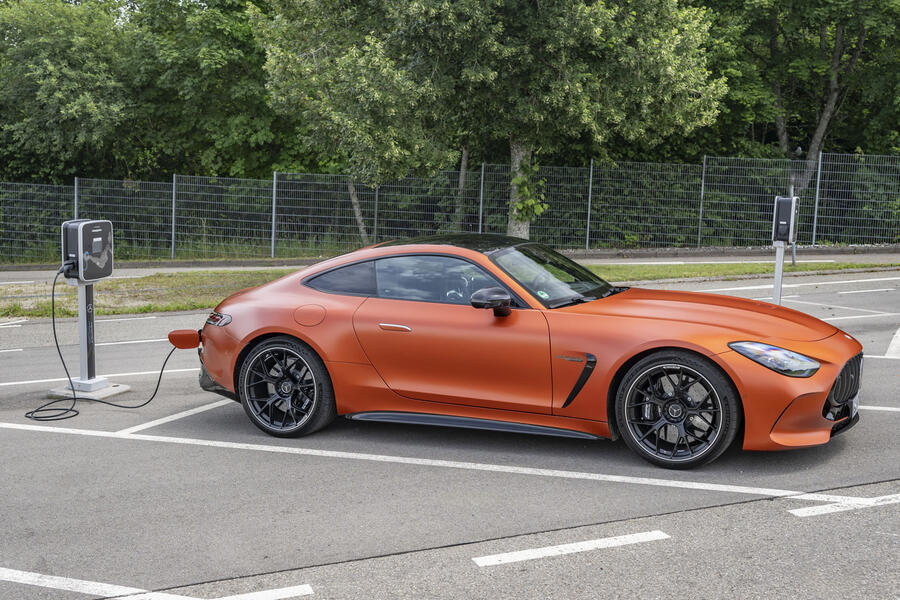At 4728mm long, 1984mm wide and 1354mm tall, the GT has grown in every direction in order to offer more interior space and accommodate those rear seats.
Engines are the same as in the SL, the GT arriving exclusively with AMG’s twin-turbocharged 4.0-litre V8 in two states of tune: 469bhp and 516b ft of torque in the GT 55, and 577bhp and 590lb ft in the GT 63 (layout shown in the below graphic).
The track-focused Pro version has an additional 27bhp and 37lb ft of torque, at 603bhp and 627lb ft. To meet the added demands of track running, the reworked V8 receives an upgraded cooling system with two additional radiators up front. There are also now electrically operated water pumps for each of the car’s differentials.
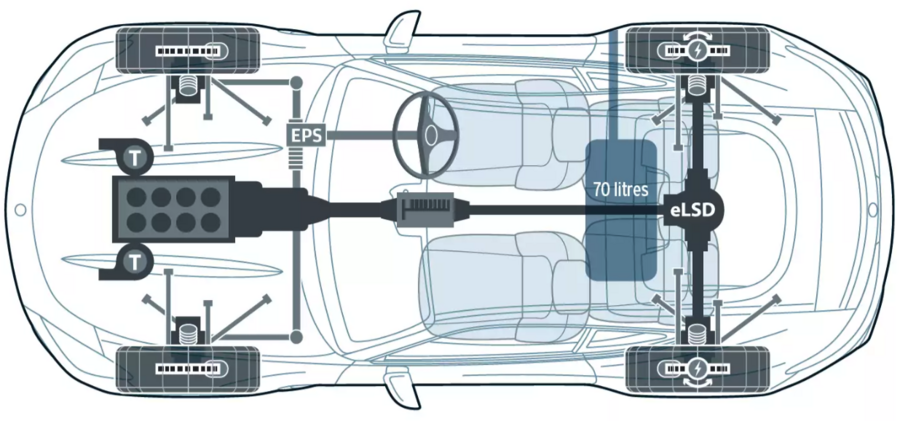
The GT 43 uses a 2.0-litre four-cylinder. Yes, really. The M139 engine is a development of the one in the A45. At 416bhp, it's not short on power thanks to being boosted in two ways by a 48V mild-hybrid system. There’s an integrated starter/generator that can contribute 13bhp but, more interestingly, an electric motor in the turbocharger can spin it up even when the flow of exhaust gas is still weak, thus improving throttle response. Unlike the other GTs, it drives the rear wheels only.
The old car's dual-clutch, rear-mounted transaxle gearbox is gone in favour of a more traditionally Mercedes layout of a Speedshift MCT nine-speed wet-clutch automatic gearbox bolted directly to the engine. There are no contemporary electrification measures for most models – at least, not yet. But that’s not to say AMG hasn’t been busy attempting to improve the engine: it has repositioned the intercooler, revised the inlet and outlet ports, redesigned the oil pan and fitted additional ventilation measures for the crankcase.
All this is underpinned by aluminium-intensive five-link front and rear suspension arrangements. Like the SL, the GT gets traditional steel springs in combination with new adaptive twin-valve dampers, which offer individual compression and rebound rates.
Both the GT 55 and GT 63 have AMG’s Active Ride Control system, which was pioneered by the old Mercedes-AMG GT Black Series and also features on the SL 63. This ditches the anti-roll bars completely in favour of individual oil-based actuators at each wheel to control lean. The GT also comes with four-wheel steering as standard. The system provides up to 2.5deg of steering angle to the rear wheels at speeds of up to 62mph. Furthermore, the rear axle gets an electronically controlled limited-slip differential and brake-actuated torque vectoring.






